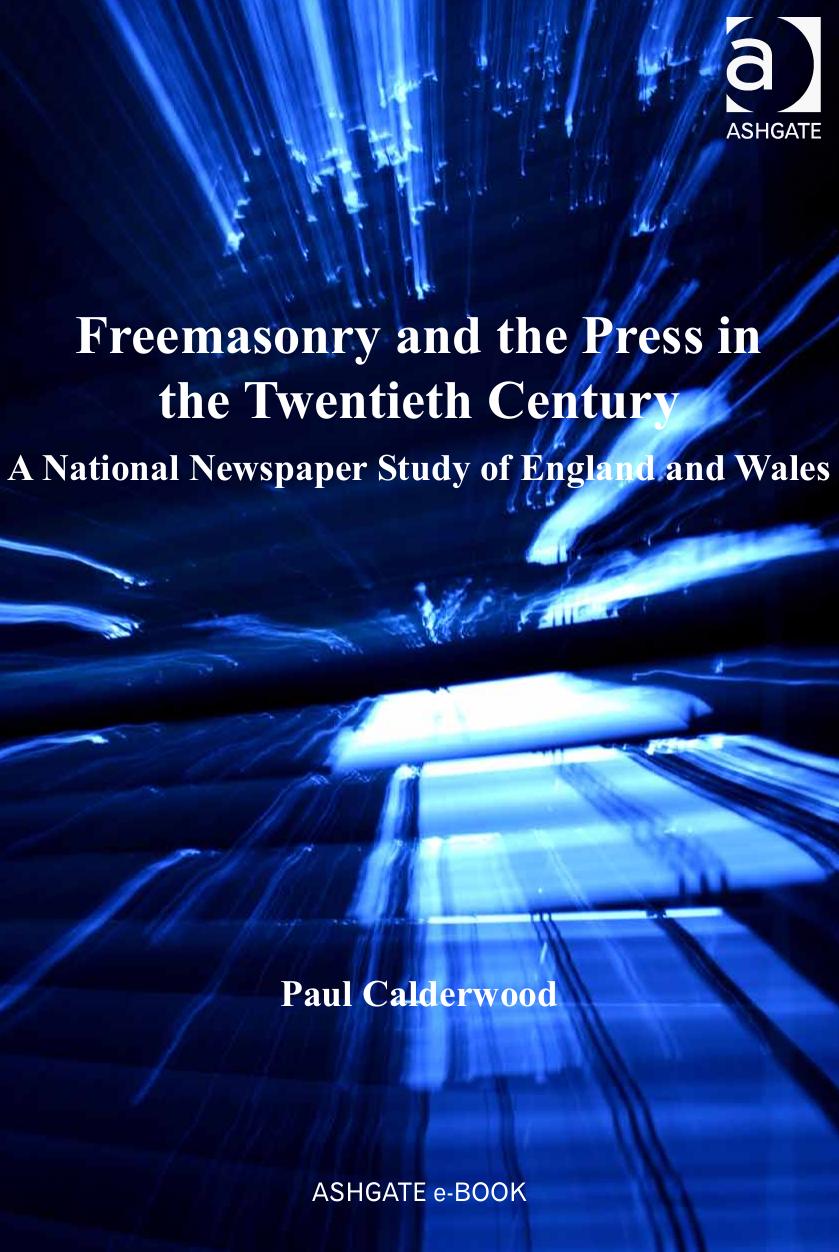Freemasonry and the Press in the Twentieth Century by Calderwood Paul

Author:Calderwood, Paul.
Language: eng
Format: epub, pdf
Publisher: Taylor & Francis (CAM)
Published: 2013-03-14T16:00:00+00:00
Judaism
The newspaper records of freemasonry in England and Wales detailed its relationship not only with Christianity but also with a host of other religions. The most frequently mentioned was Judaism.195 Although the Jewish community in Britain does not appear to have ever expressed any official view about freemasonry, there is no doubt that a warm and close relationship has existed for centuries. The use of Old Testament stories in so many masonic rituals may have given freemasonry a particular appeal to the Jewish community. For centuries, freemasonry, as Katz argued,196 provided a logical avenue for members of marginalised Jewish communities to become integrated into western society.197 However, while many Jews joined freemasonry for this and other reasons, it is important to note that many Jews did not become Masons. Nonetheless, the two communities, in their entirety, were frequently bracketed together – and labelled as trouble-makers. The international networks and air of mystery that surrounded both Jews and freemasons lent credibility to conspiracy theories, fuelled by ‘The Protocols’.198
Most references to ‘Jews and Freemasons’ in the press of England and Wales came from hostile (mostly overseas) groups and were frequently related to conspiracy theories.199 One of the most widely publicised critics was Major-General Erich Ludendorff, who regarded ‘Freemasons and Jews as having been the authors of the War and every other affliction’.200 Fascist governments throughout Europe later pursued the most extreme denunciation and persecution of both groups.201 Lodges and synagogues were jointly targeted for closure wherever Fascism prevailed.202 Even in neutral Switzerland, Fascists proposed – unsuccessfully – ‘a plan to mark all Jews and Freemasons so that they can be easily recognised’.203 Fascists were not the only people to object to the part played by members of the Jewish faith in freemasonry. Similar criticisms came from Catholic sources – and have a much longer history. Pope Leo XIII had condemned freemasonry as ‘the synagogue of Satan’ and prompted The Times to observe that ‘This allusion to a Jewish presence was not without grounds, if totally lacking in moral justification. Italy’s first and only Anglican Prime Minister, Sidney Sonnino; was of Jewish origin and a freemason, as was Ernesto Nathan, freemasonry’s Grand Master from 1917 to 1919 and the only non-Catholic ever to be Mayor of Rome until the last elections’.204
For its part, freemasonry – despite murderous assaults – scoffed at Judeo-masonic conspiracy theories and proudly proclaimed the universalist nature of its organisation.205 Its universalist culture was praised by Rudyard Kipling in a letter published in the press about his Mother Lodge, the Lodge of Hope and Perseverance No. 782. He said it ‘included Brethren of at least four creeds. I was entered by a member of the Brahmo Somaj (a Hindu), passed by a Mahomedan, and raised by an Englishman. Our Tyler was an Indian Jew’.206 Many Jews – like the minister S.J. Roco, who was an officer of UGLE in 1909 – rose to high office in UGLE.207 For such a long-standing relationship, it comes as a surprise to read in
Download
Freemasonry and the Press in the Twentieth Century by Calderwood Paul.pdf
This site does not store any files on its server. We only index and link to content provided by other sites. Please contact the content providers to delete copyright contents if any and email us, we'll remove relevant links or contents immediately.
| Africa | Americas |
| Arctic & Antarctica | Asia |
| Australia & Oceania | Europe |
| Middle East | Russia |
| United States | World |
| Ancient Civilizations | Military |
| Historical Study & Educational Resources |
Cecilia; Or, Memoirs of an Heiress — Volume 1 by Fanny Burney(32068)
Cecilia; Or, Memoirs of an Heiress — Volume 3 by Fanny Burney(31463)
Cecilia; Or, Memoirs of an Heiress — Volume 2 by Fanny Burney(31413)
The Secret History by Donna Tartt(18190)
Sapiens: A Brief History of Humankind by Yuval Noah Harari(13994)
Leonardo da Vinci by Walter Isaacson(12810)
The Radium Girls by Kate Moore(11627)
Sapiens by Yuval Noah Harari(5125)
How Democracies Die by Steven Levitsky & Daniel Ziblatt(4966)
The Wind in My Hair by Masih Alinejad(4850)
Homo Deus: A Brief History of Tomorrow by Yuval Noah Harari(4692)
Endurance: Shackleton's Incredible Voyage by Alfred Lansing(4513)
Man's Search for Meaning by Viktor Frankl(4295)
The Silk Roads by Peter Frankopan(4275)
Millionaire: The Philanderer, Gambler, and Duelist Who Invented Modern Finance by Janet Gleeson(4108)
The Rape of Nanking by Iris Chang(4024)
Hitler in Los Angeles by Steven J. Ross(3803)
The Motorcycle Diaries by Ernesto Che Guevara(3790)
Joan of Arc by Mary Gordon(3790)
